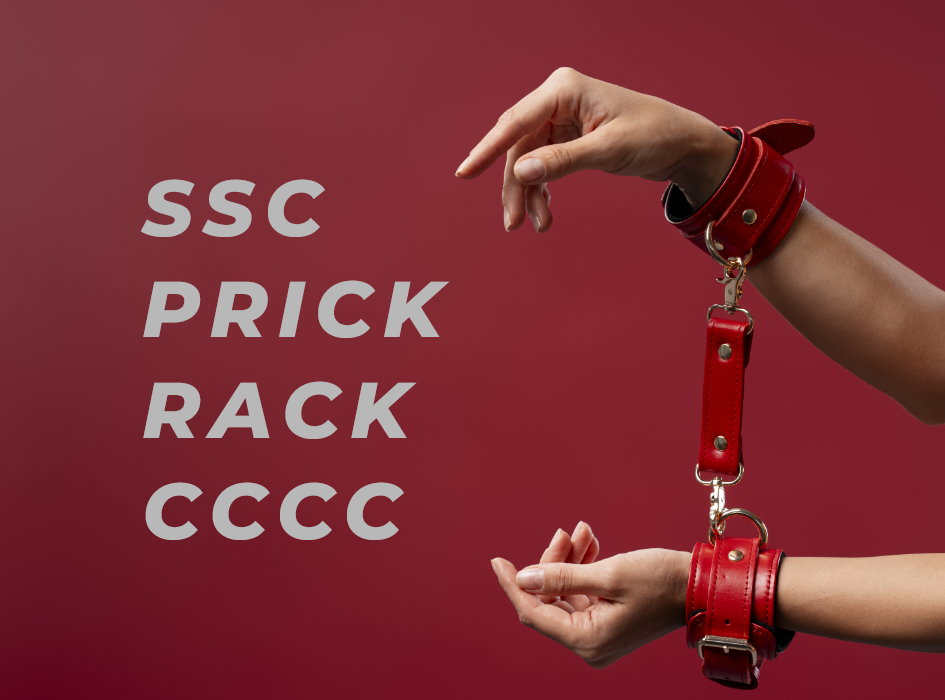BDSM relationships can be fulfilling, exciting, and deeply intimate, but like any relationship, they require trust, communication, and respect. Sometimes, though, things can go wrong, and it’s important to recognize the red flags that indicate unhealthy or abusive behavior. This guide will help you understand the warning signs in a BDSM dynamic and give you tips on how to protect yourself.
What Are Red Flags in BDSM Relationships?
Red flags are behaviors or patterns that suggest something might be wrong in your BDSM relationship. These issues can stem from a lack of understanding, poor communication, or outright manipulation and abuse.
In a BDSM dynamic, where power exchange is involved, recognizing red flags early is crucial to maintaining a safe and consensual relationship.
Key Red Flags to Watch Out For
1. Ignoring Boundaries
Boundaries are non-negotiable in BDSM. If someone pressures you to go beyond your limits or disregards the boundaries you’ve set, it’s a major red flag.
Example:
- Pushing for activities you’ve said no to.
- Brushing off your concerns with phrases like, “Don’t worry, it’ll be fine.”
2. Lack of Communication
Healthy BDSM relationships thrive on clear, open communication. If your partner avoids discussions about consent, safewords, or aftercare, it’s a sign of trouble.
Example:
- Refusing to discuss scenes in detail before they happen.
- Avoiding conversations about emotional or physical needs.
3. Using Manipulation or Guilt
Manipulative behavior, like guilt-tripping or emotional blackmail, has no place in a BDSM dynamic. A good partner will respect your decisions without trying to control or coerce you.
Example:
- “If you really loved me, you’d do this.”
- “A real submissive wouldn’t question their dominant.”
4. Disrespecting Safewords
Safewords are essential for safety during BDSM play. Ignoring or mocking safewords is a blatant disregard for your well-being.
Example:
- Continuing a scene after you’ve used a safeword.
- Laughing off your attempt to pause or stop the scene.
5. Isolation
If your partner tries to isolate you from friends, family, or the kink community, it’s a sign of controlling behavior. Healthy relationships encourage support networks, not cut you off from them.
Example:
- Discouraging you from attending events or talking to others in the community.
- Insisting that only they can “train” or “guide” you.
6. No Focus on Safety
BDSM can involve physical and emotional risks, so a responsible partner will prioritize safety at all times. If someone dismisses precautions or neglects aftercare, they’re not acting in your best interest.
Example:
- Refusing to discuss safety measures before a scene.
- Skipping aftercare despite knowing you need it to feel grounded.
7. Exploiting Vulnerabilities
A good BDSM partner will never take advantage of your insecurities or past experiences. Exploiting vulnerabilities for their gain is manipulative and harmful.
Example:
- Using your past trauma to control your behavior.
- Making you feel unworthy or incapable of setting boundaries.
How to Protect Yourself from Red Flags
1. Trust Your Instincts
If something feels off, listen to your gut. Your intuition is often the first line of defense against unhealthy behavior.
2. Educate Yourself
Learn about BDSM dynamics, consent, and safety practices. The more informed you are, the easier it is to spot when something isn’t right.
3. Communicate Clearly
Set your boundaries early and reinforce them when needed. A good partner will respect them without question.
4. Build a Support Network
Connect with others in the BDSM community who can offer guidance, support, and advice. Having a trusted circle can help you navigate your dynamic with confidence.
5. Know When to Walk Away
If red flags persist despite your efforts to address them, it’s okay to leave the relationship. Your safety and well-being should always come first.
The Bottom Line
BDSM relationships, like any other relationships, require trust, respect, and communication. Recognizing and addressing red flags early on can save you from harm and help you build healthier dynamics in the future.
Always remember: your safety, consent, and comfort are non-negotiable. If something feels wrong, don’t ignore it. Seek support, set boundaries, and prioritize your well-being.
Related posts
-
Acronyms of BDSM : A Look at SSC, RACK, PRICK and CCCC
BDSM acronyms have emerged and been debated over a time as away to protect BDSM......
-
Is It Common to Lose an Erection When Wearing a Condom?
Have you ever been ready to go, but lost your erection when putting on a......
-
Is the Idea of a Cuckquean Rooted in Myth or Real-life Practices?
A cuckquean is a woman whose husband is unfaithful, often with her knowledge and sometimes......


